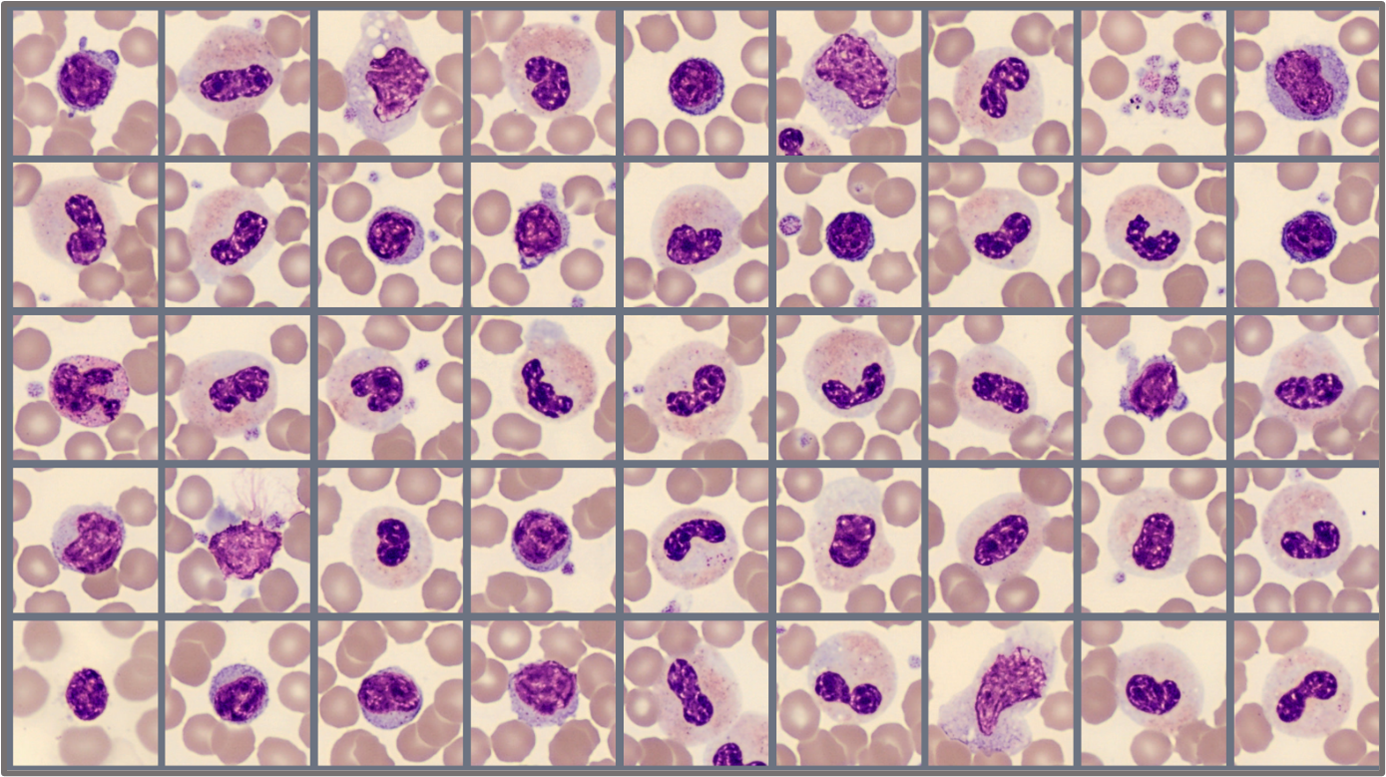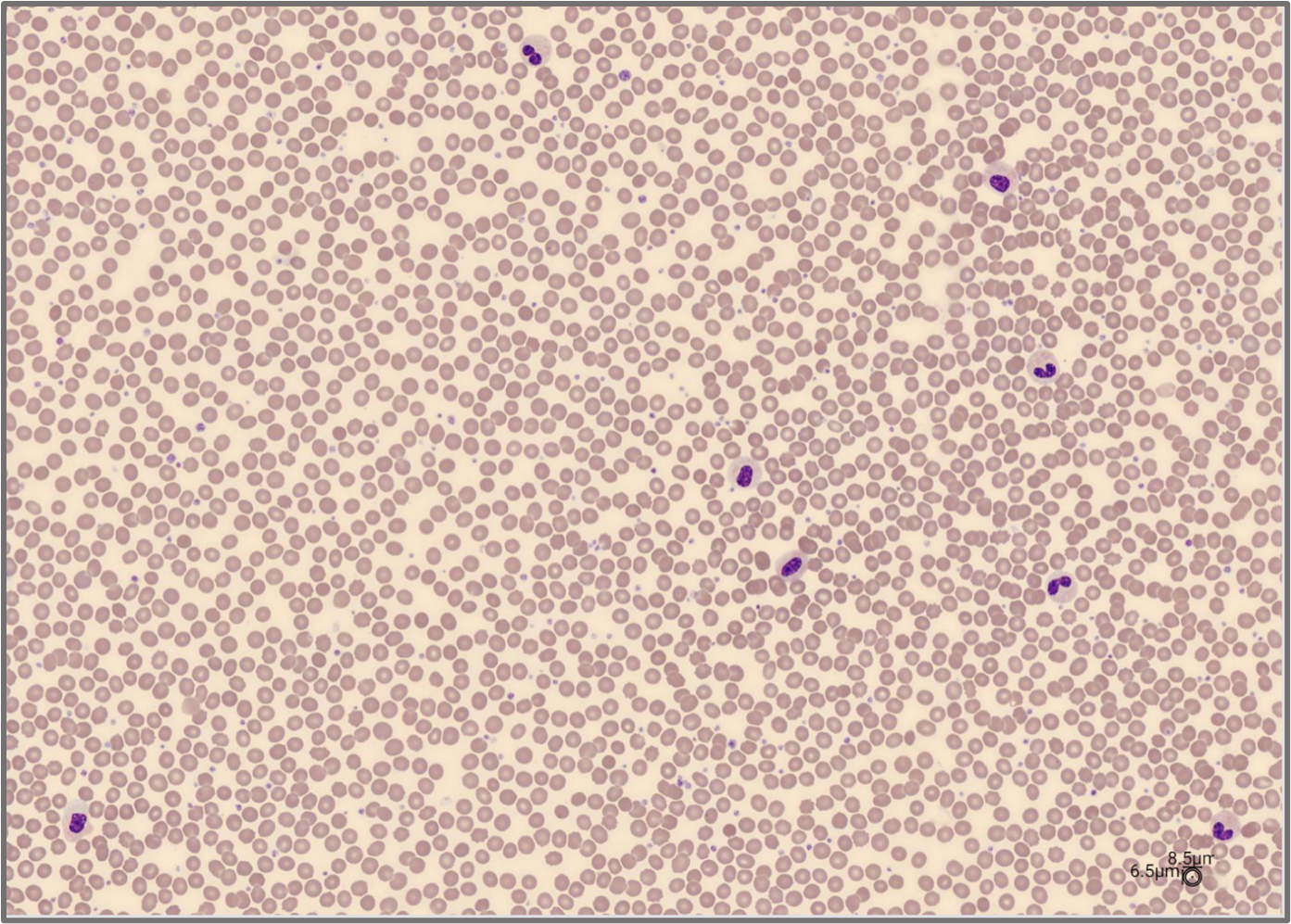Global test 2024:3 - Pelger-Huet Anomaly
Case Description
A 35-year-old female with fever and fatigue.
Laboratory Findings
|
Test |
Result |
Reference Interval |
Unit |
|
WBC |
22.2 |
4.5-11.5 |
x109/L
|
|
RBC |
4.77 |
3.5-5.5 |
x1012/L |
|
HGB |
13.8 |
14-17.5 |
mg/dL |
|
HCT |
43.4 |
40-54 |
% |
|
MCV |
91.0 |
80-100 |
fL |
|
MCH |
28.9 |
27-31 |
pg |
|
MCHC |
31.8 |
32-36 |
g/dL |
|
PLT |
384 |
150-450 |
x109/L |
Sample of cells classified in the Global Test 2024:3

RBC Overview

Case Conclusion
The CBC data indicate leukocytosis with absolute neutrophilia. The platelet count and hemoglobin were both normal. Most neutrophils exhibited Pelgeroid changes including hypolobulated nuclei, hypercondensed chromatin, and decreased N:C ratio. RBC morphology was largely unremarkable.
There were significant differences between the examiners and some participants in the classification of neutrophils with Pelger-Huet (PH) morphology. This was discussed during the webinar
Global Test 2024:3 Results Webinar
Questions discussed during the webinar include:
- Comparison of participant and examiner results
- How to identify hypogranular basophils
- Discussion of the underlying causes and clinical/laboratory features of PH and pseudo PH anomaly.
- Morphological characteristics of PH neutrophils
- Discussion of ICSH guidelines for classifying PH neutrophils
- How to differentiate PH neutrophils from normal segs, bands, metamyelocytes, and myelocytes
- The differences in morphology between pyknotic (apoptotic) neutrophils and PH neutrophils.